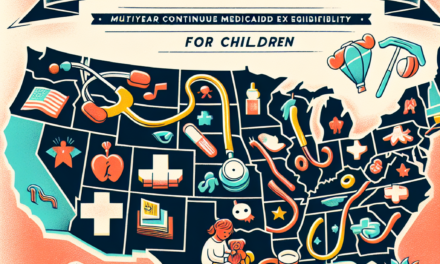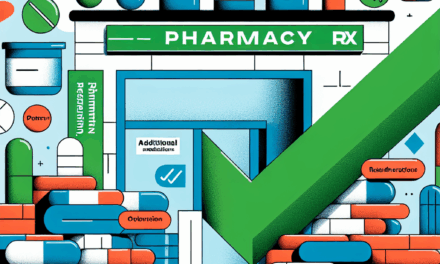Rising Threats: Hacking and Ransomware Fueling Healthcare Data Breaches, According to Study
The healthcare sector has increasingly become a prime target for cybercriminals, with hacking and ransomware attacks leading to significant data breaches. A recent study highlights the alarming rise in these threats, emphasizing the vulnerabilities within healthcare systems and the dire consequences of such breaches. This article delves into the various aspects of hacking and ransomware in healthcare, exploring the motivations behind these attacks, the impact on patient care, and the measures that can be taken to mitigate these risks.
The Landscape of Cyber Threats in Healthcare
As technology continues to evolve, so do the tactics employed by cybercriminals. The healthcare industry, with its vast amounts of sensitive data, has become a lucrative target for hackers. According to the 2022 Verizon Data Breach Investigations Report, healthcare was the most attacked sector, accounting for 25% of all data breaches. This section will explore the types of cyber threats facing healthcare organizations and the motivations behind these attacks.
Types of Cyber Threats
Cyber threats in healthcare can be categorized into several types, each with its unique characteristics and implications:
- Hacking: Unauthorized access to systems and data, often through exploiting vulnerabilities in software or hardware.
- Ransomware: Malicious software that encrypts data, rendering it inaccessible until a ransom is paid.
- Phishing: Deceptive emails or messages designed to trick individuals into revealing sensitive information.
- Insider Threats: Employees or contractors who misuse their access to data for malicious purposes.
- Distributed Denial of Service (DDoS) Attacks: Overloading a system with traffic to disrupt services.
Each of these threats poses significant risks to healthcare organizations, not only in terms of financial loss but also in the potential harm to patients. For instance, a ransomware attack can halt hospital operations, delaying critical care and endangering lives.
Motivations Behind Cyber Attacks
The motivations for cyber attacks in healthcare are varied and complex. Understanding these motivations can help organizations better prepare for and defend against potential threats:
- Financial Gain: Many cybercriminals are motivated by the potential for financial profit, either through ransom payments or the sale of stolen data on the dark web.
- Political or Social Activism: Some attacks are driven by ideological beliefs, where hackers aim to expose perceived injustices within the healthcare system.
- Revenge or Personal Grievances: Insider threats may stem from disgruntled employees seeking to harm the organization.
- Intellectual Property Theft: Cybercriminals may target healthcare organizations to steal research data or proprietary information.
Understanding these motivations is crucial for healthcare organizations to develop effective cybersecurity strategies that address the specific threats they face.
The Impact of Data Breaches on Healthcare
The consequences of data breaches in healthcare extend far beyond financial losses. They can have profound implications for patient care, organizational reputation, and regulatory compliance. This section will explore the multifaceted impact of data breaches on healthcare organizations and their stakeholders.
Patient Care and Safety
Data breaches can directly affect patient care and safety in several ways:
- Disruption of Services: Ransomware attacks can cripple healthcare operations, leading to delays in treatment and potential harm to patients.
- Loss of Trust: Patients may lose trust in healthcare providers if they feel their personal information is not secure, leading to reluctance in seeking care.
- Compromised Patient Data: Breaches can result in the exposure of sensitive health information, which can be used for identity theft or fraud.
For example, the 2020 ransomware attack on Universal Health Services (UHS) led to significant disruptions in patient care, with reports of patients being diverted to other facilities and delays in critical services. Such incidents highlight the urgent need for robust cybersecurity measures in healthcare.
Financial Consequences
The financial impact of data breaches can be staggering for healthcare organizations:
- Ransom Payments: Organizations may be forced to pay substantial ransoms to regain access to their data, as seen in the case of the Colonial Pipeline attack.
- Regulatory Fines: Breaches can lead to hefty fines from regulatory bodies for failing to protect patient data, as mandated by laws such as HIPAA.
- Legal Costs: Organizations may face lawsuits from affected patients, leading to additional legal expenses.
According to a report by IBM, the average cost of a data breach in healthcare is approximately $9.23 million, significantly higher than in other industries. This financial burden can strain resources and divert funds away from patient care and innovation.
Reputational Damage
The reputational damage resulting from data breaches can have long-lasting effects on healthcare organizations:
- Loss of Patient Trust: Patients may choose to seek care elsewhere if they perceive an organization as unsafe.
- Negative Media Coverage: Breaches often attract media attention, leading to public scrutiny and criticism.
- Impact on Partnerships: Collaborations with other organizations may be jeopardized if trust is eroded.
For instance, after the 2015 Anthem data breach, the company faced significant backlash, resulting in a loss of trust among its members and partners. Rebuilding a tarnished reputation can take years and requires substantial effort and resources.
Case Studies of Notable Healthcare Data Breaches
Examining notable healthcare data breaches can provide valuable insights into the tactics used by cybercriminals and the vulnerabilities that exist within healthcare systems. This section will explore several high-profile cases, analyzing the methods employed and the lessons learned.
The Anthem Breach
In 2015, Anthem Inc., one of the largest health insurance companies in the United States, suffered a massive data breach that exposed the personal information of approximately 78.8 million individuals. The breach was attributed to a sophisticated cyber attack that exploited vulnerabilities in Anthem’s systems.
- Attack Vector: The attackers gained access through a phishing email that tricked an employee into revealing their login credentials.
- Data Compromised: The breach exposed sensitive information, including names, birth dates, social security numbers, and medical IDs.
- Consequences: Anthem faced significant financial repercussions, including a $16 million settlement with the Department of Health and Human Services (HHS) and numerous lawsuits from affected individuals.
This case underscores the importance of employee training and awareness in preventing phishing attacks, as well as the need for robust security measures to protect sensitive data.
The Universal Health Services Attack
In September 2020, Universal Health Services (UHS), a major healthcare provider, experienced a ransomware attack that disrupted operations across its facilities. The attack forced UHS to revert to paper-based systems, leading to significant delays in patient care.
- Attack Vector: The ransomware used in the attack was identified as Ryuk, which is known for targeting large organizations.
- Impact on Operations: UHS reported that the attack affected its ability to access patient records, schedule appointments, and process billing.
- Response: UHS worked with cybersecurity experts to contain the attack and restore systems, but the incident highlighted vulnerabilities in their IT infrastructure.
This case illustrates the critical need for healthcare organizations to have incident response plans in place and to regularly assess their cybersecurity posture.
The CHS Data Breach
In 2014, Community Health Systems (CHS) suffered a data breach that compromised the personal information of 4.5 million patients. The breach was attributed to a sophisticated cyber attack that exploited vulnerabilities in CHS’s systems.
- Attack Vector: The attackers used malware to gain access to CHS’s network and exfiltrate sensitive data.
- Data Compromised: The breach exposed names, birth dates, social security numbers, and other personal information.
- Consequences: CHS faced significant financial repercussions, including a $150 million settlement with affected individuals.
This case highlights the importance of implementing strong security measures, such as encryption and network segmentation, to protect sensitive data from cyber threats.
Strategies for Mitigating Cybersecurity Risks in Healthcare
As cyber threats continue to evolve, healthcare organizations must adopt comprehensive strategies to mitigate risks and protect sensitive data. This section will explore various strategies that can be implemented to enhance cybersecurity in healthcare.
Employee Training and Awareness
One of the most effective ways to prevent cyber attacks is through employee training and awareness programs. Organizations should prioritize educating their staff about cybersecurity best practices:
- Phishing Awareness: Employees should be trained to recognize phishing emails and suspicious links, reducing the likelihood of falling victim to such attacks.
- Data Handling Procedures: Staff should be educated on proper data handling procedures to minimize the risk of accidental data exposure.
- Incident Reporting: Employees should be encouraged to report any suspicious activity or potential breaches promptly.
Regular training sessions and simulated phishing exercises can help reinforce these concepts and keep cybersecurity top of mind for employees.
Implementing Robust Security Measures
Healthcare organizations must invest in robust security measures to protect their systems and data:
- Encryption: Encrypting sensitive data can help protect it from unauthorized access, even if it is intercepted.
- Access Controls: Implementing strict access controls ensures that only authorized personnel can access sensitive information.
- Regular Software Updates: Keeping software and systems up to date can help patch vulnerabilities that cybercriminals may exploit.
By adopting a multi-layered security approach, healthcare organizations can significantly reduce their risk of cyber attacks.
Developing an Incident Response Plan
An effective incident response plan is essential for healthcare organizations to respond quickly and effectively to cyber incidents:
- Identification: Establish procedures for identifying potential breaches and assessing their impact.
- Containment: Develop strategies for containing breaches to prevent further damage.
- Recovery: Outline steps for restoring systems and data after a breach.
- Communication: Establish protocols for communicating with stakeholders, including patients and regulatory bodies, in the event of a breach.
Regularly testing and updating the incident response plan can help ensure that organizations are prepared to respond effectively to cyber threats.
The Future of Cybersecurity in Healthcare
As technology continues to advance, the landscape of cybersecurity in healthcare will evolve. This section will explore emerging trends and technologies that may shape the future of cybersecurity in the healthcare sector.
Artificial Intelligence and Machine Learning
Artificial intelligence (AI) and machine learning (ML) are increasingly being utilized in cybersecurity to enhance threat detection and response:
- Threat Detection: AI algorithms can analyze vast amounts of data to identify patterns and anomalies that may indicate a cyber threat.
- Automated Response: Machine learning can enable automated responses to certain types of threats, reducing response times and minimizing damage.
- Predictive Analytics: AI can help organizations predict potential vulnerabilities and proactively address them before they are exploited.
As these technologies continue to develop, they hold the potential to revolutionize cybersecurity in healthcare, making systems more resilient against cyber threats.
Regulatory Changes and Compliance
The regulatory landscape surrounding healthcare cybersecurity is constantly evolving. Organizations must stay informed about changes in regulations and compliance requirements:
- HIPAA Compliance: Healthcare organizations must continue to adhere to HIPAA regulations regarding the protection of patient data.
- State Regulations: Many states have enacted their own data protection laws, which organizations must also comply with.
- International Standards: As healthcare becomes more globalized, organizations may need to consider international data protection standards, such as the General Data Protection Regulation (GDPR).
Staying compliant with evolving regulations is essential for protecting patient data and avoiding legal repercussions.
Conclusion
The rising threats of hacking and ransomware in healthcare are a pressing concern that requires immediate attention. As cybercriminals continue to exploit vulnerabilities within healthcare systems, organizations must take proactive measures to protect sensitive data and ensure patient safety. By understanding the landscape of cyber threats, the impact of data breaches, and implementing effective strategies for mitigation, healthcare organizations can enhance their cybersecurity posture and safeguard the trust of their patients.
As we look to the future, emerging technologies such as AI and machine learning will play a crucial role in shaping the cybersecurity landscape in healthcare. However, the responsibility lies with healthcare organizations to prioritize cybersecurity and foster a culture of awareness and preparedness. Only through collective efforts can we hope to combat the rising tide of cyber threats and protect the integrity of our healthcare systems.





